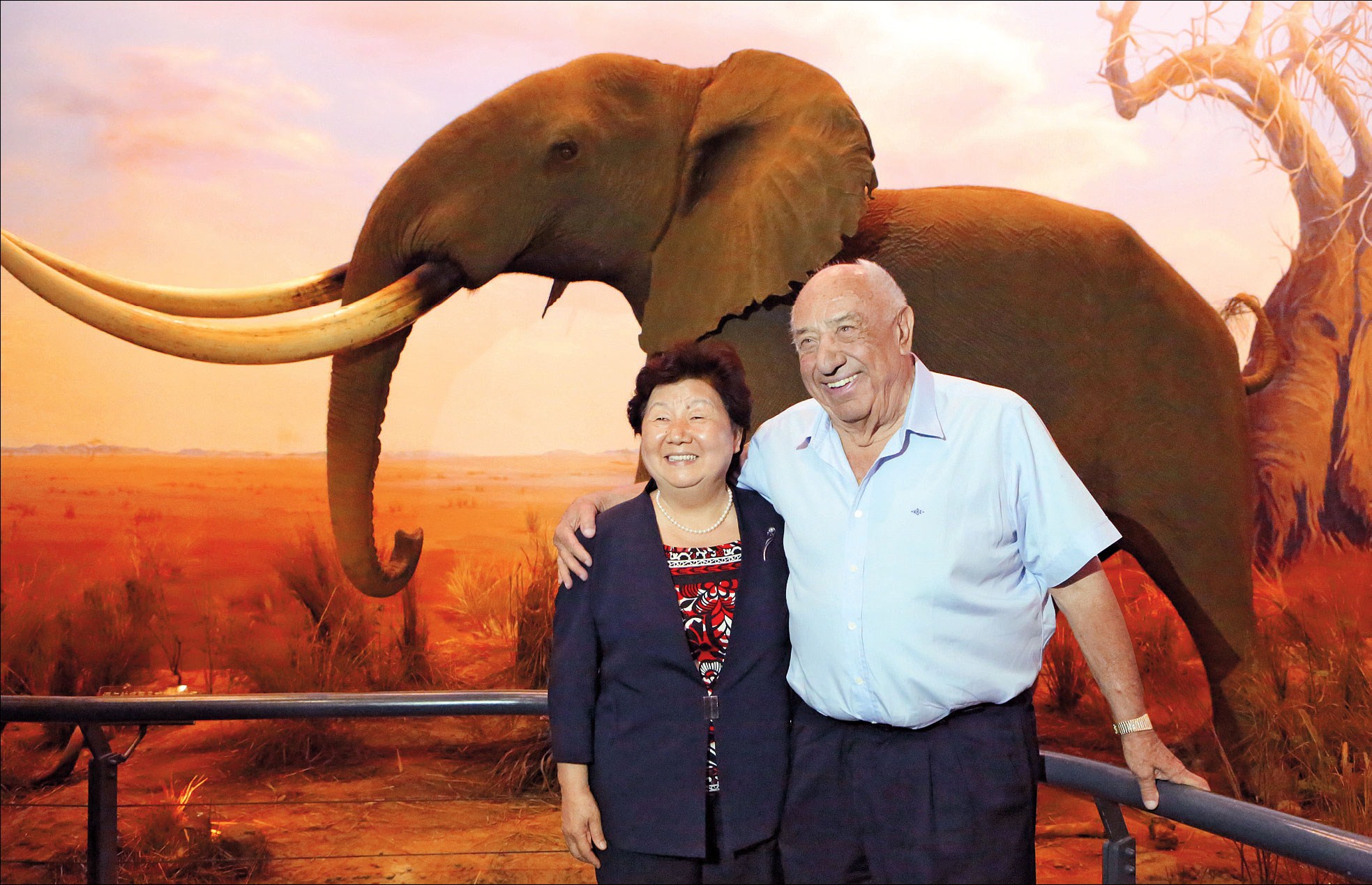This article is borrowed and redistributed from Shanghai Daily and written by Cai Wenjun. The original article can be read by clicking here.
KENNETH E. Behring, an 86-year-old philanthropist and real estate developer, has become the biggest donor to the new Shanghai Museum of Natural History.
A total of 307 specimens valued at over US$30 million donated by Behring have arrived in Shanghai to enrich the museum’s collection. More than 30 of the stuffed animals belong to endangered species, including the bongo, a forest antelope of central Africa.
“There are only two (other) bongo specimens in the world, but we get two from Behring,” said Zuo Huanchen, former vice mayor of Shanghai and board chairwoman of the Shanghai Science Education Development Foundation.
Behring has been working with world-class museums for more than 10 years. Since 2004, his foundations have developed animal exhibitions in China, including in the cities of Beijing, Shanghai, Tianjin, Dalian, Yangzhou, Shenzhen and Chongqing. Supplying specimens to seven city museums and eight Animal Exhibition Halls, the total value of these animals has reached over US$70 million.
Shanghai Science and Technology Museum (SSTM), which opened in late 2001, is one of the biggest beneficiaries. Almost all specimens at the Animal World in the museum were donated by Behring. Behring started to cooperate with SSTM in 2004 and has donated more than 300 items, including 180 big mammals, museum officials said.
“When children see these animals, we see smiles on their faces,” Behring said.
Greatest Museum
When officials from SSTM, which manages the new museum of natural history, told Behring they wanted to move some specimens from the science and technology museum to the new museum, Behring said he would donate new animals instead.
Behring said he’s excited about the new museum, which is in the process of relocating. He expressed confidence that it will be a modern facility that integrates exhibition and education, collection and research.
“It will be one of the greatest museums in the world, and I want my donation to make it not only one of the greatest but the greatest one,” he said. “My donation to the new museum will be three times those to the Shanghai Science and Technology Museum, and those animals are all from Africa. They are not only animals but families from each species,” he said. “We want children to really see true animals from Africa. This is education.”
The new museum will have a special hall decorated like an African savanna to exhibit the specimens. Some specimens will be arranged to present scenes, such as a lion preying on an antelope. A wide LED screen, 31 meters by 7 meters, will show a documentary of animal migrations across the savanna.
“I donated specimens … to use museums as platforms in a larger plan to help educate, inspire and develop future generations of public and private sector leaders around the world,” he said in his biography, “The Road to Leadership.”
To boost science education and encourage children’s love of animals, Behring also initiated an activity called Global Natural History Day with the Shanghai Science Education Development Foundation. It’s a competition to inspire Chinese elementary and middle school students’ interest in the fields of natural science and history. As an extracurricular educational supplement activity, this program encourages the use of research, analysis and critical thinking skills.
Winning teams will be sponsored to have a discovery trip to see real animals in other part of the world. Previous winners have gone to New Zealand and South Africa. The winning team this year will visit a wild animal protection reservation in China.
Person of Purpose
Behring grew up in poverty and began to make money as a newspaper and milk-delivery boy at the age of 7. He became rich by becoming an automobile dealer and then a real estate developer. He has been listed several times on the annual Forbes 400 list of richest Americans. In 1997, his last year on the list, he ranked No. 395, with an estimated net worth of US$495 million.
Behring wants more than riches, desiring to become a person of purpose.
“One of my first glimpses of it came in 2000, when I lifted a small Vietnamese girl from the ground and placed her in a wheelchair. In that instant, she found hope. And I knew that as much as she had changed in that moment, I had changed even more,” he said in his book.
“For the first time I could remember, I felt joy. And I wanted to do everything in my power to keep that feeling alive. My desire for it turned me into a leader in the case of helping end immobility in the world.”
He founded Wheelchair Foundation in 2000 to provide free wheelchairs for people with disabilities in developing nations. The organization has delivered over 938,000 wheelchairs to 155 countries around the world. In China, the Wheelchair Foundation has distributed more than 350,000 wheelchairs, with every province benefiting.
He also set up the Rural Area Safe Drinking Water Solutions Project in 2006 to provide safe drinking water to people living in rural areas. The project partners include the China Academy of Sciences, China Foundation for Disabled Persons and China Ministry of Water Resources.
In 2012, Behring was named a worldwide ambassador for UNESCO.
You can click here (18mb in size) for a pdf copy of the Shanghai Daily Newspaper that the article appeared in.
